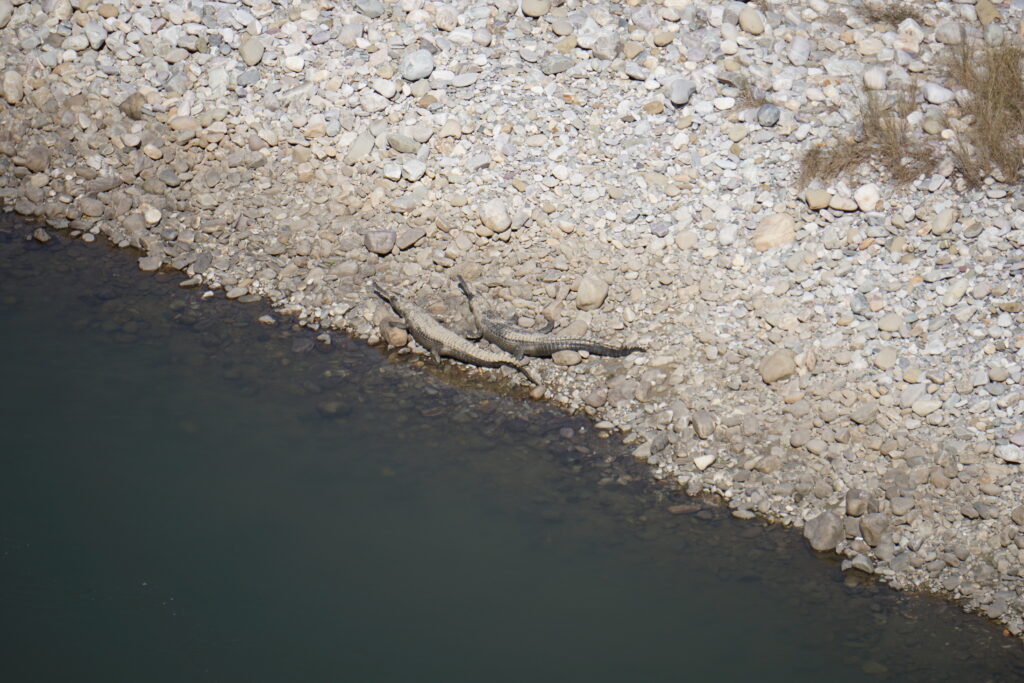‘Gharial’ comes from the Hindustani term ‘ghari’, which means clay pot, and refers to the protrusion on the snout of an adult man. Another name for it is ‘gavial’. Translation: The name ‘fish-eating crocodile’ is the Bengali term’mecho kumhir,’ where’mecho’ is a combination of’māch’ (fish) and ‘kumhir’ (crocodile). There have been times when gharial populations in India have been referred to as “Indian gharials.”
More than 400 gharials reside at Jim Corbett National Park’s Ramganga, where they can be observed sunbathing on the banks or swimming in the deep pools,Numerous reptiles, including snakes like pythons, turtles, cobras, and vipers, may be found in Jim Corbett. The park’s rivers and lakes are home to crocodiles, gharials, and muggers.
The remaining population is found in the Ganges river system’s tributaries, which include the Mahanadi (Orissa), Girwa (Uttar Pradesh), Son (Madhya Pradesh), Ramganga (Uttarakhand), Gandak (Bihar), and Chambal (Uttar Pradesh, Madhya Pradesh, and Rajasthan).
The longest crocodilian species still alive is the gharial (Gavialis gangeticus), sometimes referred to as the gavial or fish-eating crocodile. Males reach lengths of 3 to 6 m (9 ft 10 in to 19 ft 8 in), whereas mature females reach lengths of 2.6 to 4.5 m (8 ft 6 in to 14 ft 9 in). The term “gharial” comes from the distinctive boss that adult males have at the end of their snout, which resembles a ghara, an earthenware pot. The gharial’s 110 sharp, interlocking teeth and long, thin snout make it an excellent fish-catching animal.
Since the 1930s, the number of wild gharials has decreased significantly, and it currently only makes up 2% of their former range. Since the early 1980s, conservation initiatives in India and Nepal have been centred on restoring gharials that were produced in captivity. The population is still in danger due to harmful fishing practices, fish resource depletion, and habitat loss from sand mining and agricultural conversion. Since 2007, it has been included on the IUCN Red List as critically endangered.

The Indus Valley is home to the earliest known images of the gharial, which date back approximately 4,000 years. Hindus believe it to be the river goddess Gaṅgā’s vehicle. People who lived close to rivers believed that gharials had magical and therapeutic properties, and they used some of their body parts to make traditional medicines.
Fishermen killed gharials, and they were hunted for skins, trophies, and traditional medicine. Their eggs were also harvested for human food. The residual individuals comprise multiple dispersed subpopulations. Nowadays, hunting is not regarded as an imminent danger, Gavialidae family, of which the Gharial is the sole living member. The Ganga River and its principal tributaries are home to all of these species. Water has historically been associated with the gharial since it is the source of fertility and all existence.
January and February are mating months (dry season). A female points her nose upward to indicate that she is ready to mate. The male’s bulbous snout knob is believed to be significant for reproduction. may serve as a resonator of sound or a visual cue for females; see Vocalisations, An important factor in preserving the natural equilibrium of riverine environments is the Indian Gharial. Being a top predator, it maintains the general health of its habitat by assisting in the management of fish and other aquatic species’ populations, Gharials can snag slippery fish thanks to their 106–110 interlocking, razor-sharp teeth.

